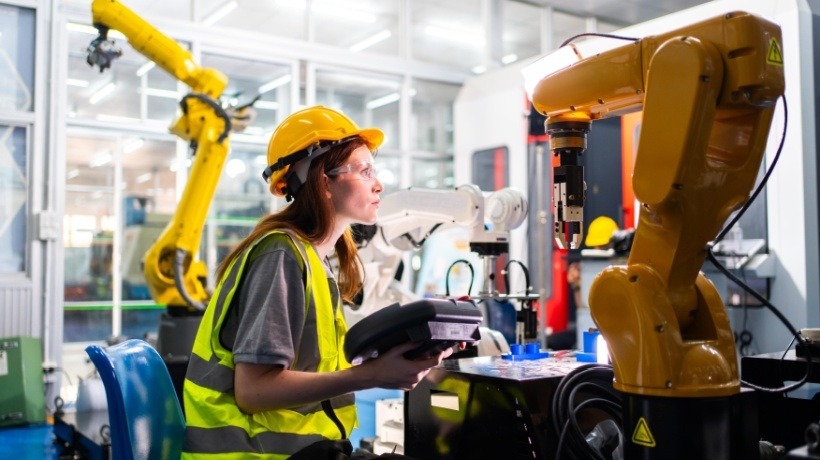Enhance Manufacturing Training With LMS Features
In the fast-paced manufacturing industry, efficient workforce training is the linchpin for operational excellence and safety. A robust Learning Management System (LMS) can transform your training processes, making them more accessible, impactful, and scalable. For training managers, HR directors, and plant managers, selecting an LMS with the right features can drive productivity, reduce errors, and ensure compliance. This guide explores the essential LMS features tailored for manufacturing, their benefits, and real-world success stories.
Essential LMS Features For Manufacturing Workforce Training
1. Customizable Learning Paths For Role-Based Training
Every manufacturing role has unique training requirements, from machine operators to safety officers. An LMS with customizable learning paths allows you to:
- Tailor training modules based on job roles and skills.
- Track progress and ensure compliance with industry standards.
- Streamline onboarding for new employees.
Case Study
Braskem Corporation, a multinational manufacturer, faced challenges in maintaining consistent training standards across various countries with different regulatory requirements. By implementing the GyrusAim LMS, they centralized training management, provided multilingual support, and customized learning paths for specific roles and regulations. This led to improved compliance rates and enhanced employee engagement worldwide.
2. In-Plant Device Access For Training In The Flow Of Work
Manufacturing companies increasingly moving from traditional in-person training sessions conducted by managers to a more efficient, LMS-supported model. With responsive design, LMS platforms are accessible across desktop computers, tablets, and handheld devices strategically placed throughout the plant. This ensures workers can:
- Access training materials and instructions directly at their workstations or machines.
- Complete compliance or safety training as part of their workflow.
- Stay updated on new protocols or equipment without needing to attend lengthy in-person sessions.
Sample Application
In a precision manufacturing environment, an LMS with handheld device accessibility could replace traditional manager-led classroom training. By deploying devices at workstations, employees could access bite-sized training modules on tasks like machine calibration directly during their workflow. This approach could enhance on-the-job learning, streamline processes, and reduce errors, ultimately improving overall task efficiency and operational effectiveness.
3. AR/VR Simulations For Hands-On Technical Training
While LMS platforms do not create AR/VR content, they play a vital role in launching these immersive simulations and tracking learner outcomes. AR/VR content developed using specialized tools can be integrated into the LMS, enabling:
- Immersive technical training on equipment.
- Hazard-free environments to practice safety protocols.
- Accurate tracking of learner performance and simulation results.
Case Study
Toyota has successfully integrated AR technology to streamline its production processes. By providing real-time, line-of-sight guidance to assembly line workers through AR solutions, Toyota has significantly enhanced workforce effectiveness. This approach reduces the need for mental mapping from 2D instructions, enabling workers to perform tasks more efficiently. Additionally, the immersive guidance contributes to safer working conditions by minimizing errors and physical strain during assembly operations. [1]
4. Integration With ERP And Other Manufacturing Systems
Seamless integration with Enterprise Resource Planning (ERP) systems enhances workforce efficiency by:
- Syncing training schedules with production timelines.
- Tracking certifications and ensuring compliance audits.
- Automating reporting for training ROI and performance metrics.
Sample Application
In a steel production environment, integrating an LMS with an ERP system could streamline training for heavy machinery certifications. For example, the LMS could automatically schedule required certifications based on employee roles and sync completion records with the ERP system. This integration could help ensure that only certified operators are assigned to specific machinery, reducing risks of operational delays. Additionally, training schedules could align with production timelines, minimizing downtime while maintaining compliance and workforce readiness.
5. Multisite Training Management And Multilingual Support
Manufacturers operating across multiple locations face unique challenges in maintaining consistent training standards. LMS platforms with multisite capabilities and multilingual support help by:
- Centralizing training management across facilities.
- Ensuring global teams access localized content in their preferred languages.
- Meeting diverse compliance requirements effortlessly.
Sample Application
A consumer electronics company operating across Europe could leverage an LMS with multilingual support to train employees in multiple languages. By providing localized training content tailored to regional needs, the company could ensure that employees understand critical procedures and protocols. This approach could enhance the consistency of training delivery, reduce the likelihood of errors caused by language barriers, and accelerate onboarding for new hires across various regions.
Benefits Of Implementing LMS Features In Manufacturing
1. Enhanced Safety Standards
With AR/VR simulations and responsive LMS designs, employees can master safety protocols before stepping onto the production floor, reducing workplace incidents.
2. Reduced Defects And Increased ROI
Manufacturers using advanced LMS features report:
- Up to a 20–25% reduction in production defects.
- A 20–30% improvement in workforce efficiency, depending on the scale and type of training implemented.
3. Scalable Workforce Development
Customizable learning paths and multilingual support empower global teams with consistent, high-quality training.
Conclusion
Investing in an LMS tailored for manufacturing can revolutionize workforce training, ensuring operational excellence, safety, and compliance. By leveraging features like AR/VR simulations, in-plant device access, and ERP integration, training managers, HR directors, and plant managers can drive measurable results.
Reference:
[1] Case Study: Toyota Streamlines Production with AR
Read More:
GyrusAim
The GyrusAim Product Suite is designed to completely manage the learning & development programs of companies ranging from 100 learners up to multi-site, enterprise organizations requiring complex training.

